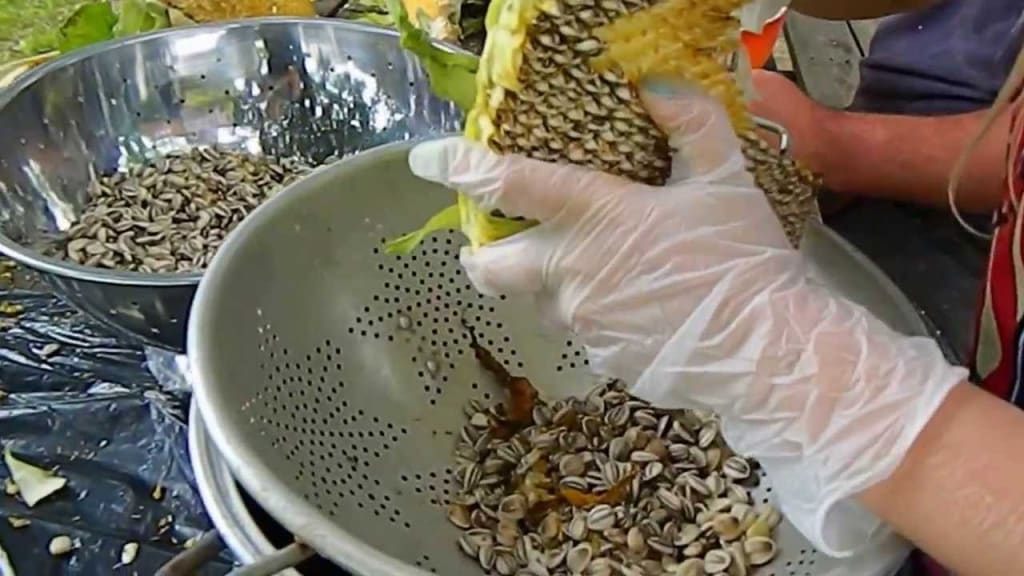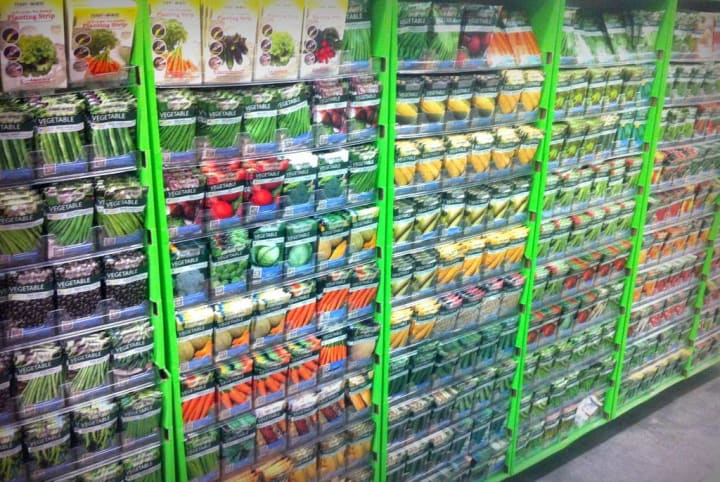Foraging For Seeds
How To Collect And Store Seeds

September 23rd is the beginning of the seed gathering season. A month-long event where people collect their favorite seeds before the winter frost sets in. Here is how to collect seeds and store them for next spring.
Where To Look?

We can collect seeds from any publicly accessible area. Arboretums and Nature Preserves love when people come by to collect seeds, but ask the ranger first before your visit. Avoid private property the best you can. If you accidentally end up there, apologize to the owner and leave immediately. If unsure, consult the hall of records to find out who owns the property to ask for permission before your visit. Select species that will increase the biodiversity of your community. Plants require a certain skill level to thrive, so pick the ones best suited for your ability. Try to avoid plants known for being invasive as they can take over your garden and your neighbor’s yards. Some plants produce seeds year-round, while few produce seeds every three or more years. Know what these plants are and plan accordingly. Don’t panic grab these seeds, however, as they usually spit out a great abundance to make up for the gap years. When they produce seeds, it’s called the Mast Year. Most nature groups on Facebook organize seed-gathering parties for their members at known hot spots. If interested in this hobby, join one of these groups to attend such events. Bring along a seed gathering guide (such as the one found at https://www.lehmans.com/) to double-check that what you are collecting isn’t a poisonous or unsafe plant.
Collecting

Once you mapped out your seeds routes and got permission from property owners, it’s time to collect. You’ll want to put your gathered seeds in a breathable container like a basket or cloth bag. Plastic causes moisture to build up, diminishing the viability of the seeds with mildew. Never take more than half the seeds you find in a spot, as the local wildlife depends on them for food. Bring some friends and family members along to make some memories of the day. Respect nature by not damaging the environment or littering everywhere. Leave things the way you found them. Never climb trees to gather seeds, as this can be very dangerous, resulting in injury or death. If in a forested area there will be plenty of seeds, unfortunately, they are all mixed up together on the forest floor. This will be another important reason to invest in a seed-gathering guide. The best seeds to collect would be the ones already on the ground looking brown and dried out. To collect them off of a plant, clip them off with garden scissors or weed cutters. Choose a dry day so the seeds will be free of moisture when collecting them. If gathering from pulpy or fleshy plants, you’ll need to plan for the extra work involved in extracting, cleaning, and drying them.
Storage

Now that you gathered all the seeds you planned to collect, head home to prepare them for long-term storage. Clean them off with a dry towel by removing all the dirt you can from them. If sticky, rinse them off in cool water and dry them off completely. Sort them into piles to prevent any mix-ups at the time of planting. Open any pods you may have and remove the seeds carefully. Toss any damaged seeds away as these are often duds that won’t grow. Once clean and sorted, spread out each pile on their own newspaper sheet. Place them outside to air dry for a week. Write on the paper’s fringe what plant it is, and the day you laid them out. If you started the drying process on September 20, 2022, that is the date you put down. You don’t want to use paper towels, as when the seeds dry, they’ll often stick to them. The bits of a towel won’t affect the seed at all, but it’ll make a gigantic mess. When finished, put them into small paper packets or envelopes, then seal them close. Before filling them, mark each one with the name of the plant, growing instructions, and date of packing three years from today. So, if you’re packing them on September 27, 2022, then the date should read September 27, 2025. Place the sealed seeds inside a food-grade jar made of glass or plastic with a couple of packets of silica gel. Rotate the silica gel every six months so moisture doesn’t build up inside the jar. Even if you plan to use the seeds right away, still do this step. Put the jars in a cool, dry place, or the back of your refrigerator.
Store Bought Seeds

As much as we would love to hunt for our own gardening seeds, it’s sometimes not always in the cards for us. Instead, we turn to those being sold at the local gardening center during early spring/late winter. There are many ways to organize these things, so pick the method you like best. Next, you’ll want to get something to hold them all in. You can buy one pre-made for $40 or more on Amazon in either a box or binder style. If feeling crafty, you can make your own out of cardboard or wood. Most of the time, people repurpose an old shoebox, photo box, or even a plastic ice cream tub to hold seeds. Whatever you choose, store them in a similar cool, dark place as you would the seeds you’ve collected. Don’t forget to include and rotate the silica gel the same way you would as well. Each seed packet has an expiration date printed on it, so make sure you properly rotated them as you would any other food item. If there is no date, it is best to use them within five years of the purchase date. Mark them accordingly with this so you don’t forget.
About the Creator
M.L. Lewis
Welcome to my little slice of pie. This blog will primarily focus on prepping and homesteading skills with a sprinkle of fiction every now and then.






Comments
There are no comments for this story
Be the first to respond and start the conversation.